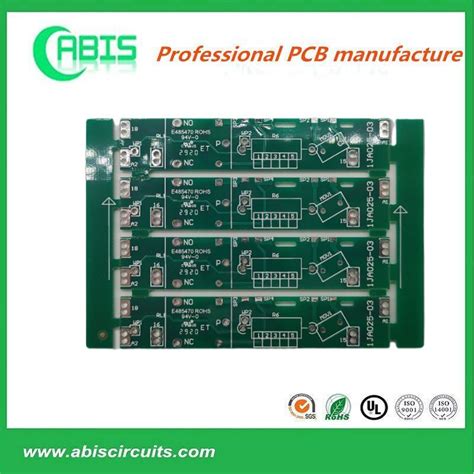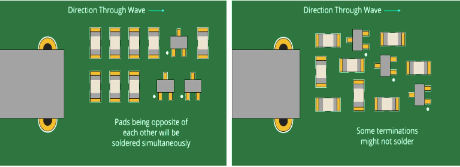Why Are PCBs Green? The Science and History Behind the Color of Circuit Boards
Introduction
When you open up any electronic device—from smartphones to laptops to industrial machinery—you’ll likely notice that most printed circuit boards (PCBs) share a common characteristic: they’re green. This distinctive color has become so ubiquitous that we rarely stop to question why PCBs are green or how this convention came to be. The green color of PCBs isn’t arbitrary; it’s the result of specific technical requirements, historical developments, and manufacturing considerations that have shaped the electronics industry.
This article explores the fascinating reasons behind PCB’s characteristic green color. We’ll examine the composition of the solder mask that gives PCBs their color, trace the historical evolution of PCB coloring, analyze the technical advantages of green PCBs, consider alternative colors and their applications, and look at potential future trends in PCB coloration. Understanding why PCBs are green provides insight into the intersection of materials science, manufacturing efficiency, and human factors engineering in electronics design.
The Solder Mask: Protective Layer and Color Source
The green color we associate with PCBs doesn’t come from the board itself but from a critical protective coating called the solder mask or solder resist. This polymer layer serves several essential functions that make it indispensable in PCB manufacturing.
Solder mask is typically applied as a liquid photoimageable polymer that hardens when exposed to ultraviolet light. The primary purpose of this layer is to prevent solder bridges from forming between closely spaced conductive elements during the soldering process. By covering all areas of the board except the actual connection points (pads and vias), the solder mask ensures that solder adheres only where intended. This precision is crucial as electronic components continue to shrink and PCB traces become increasingly dense.
Additionally, the solder mask provides insulation against environmental factors that could lead to short circuits, such as dust accumulation or moisture. It also offers some protection against oxidation of the copper traces and serves as a barrier against mechanical damage during handling and use.
The green color comes from the pigments added to the solder mask material. While the base polymer is naturally clear or slightly yellowish, manufacturers add a green pigment (typically a blend of phthalocyanine green and yellow additives) to create the characteristic PCB color. This pigmentation serves more than just aesthetic purposes—it provides important functional benefits that we’ll explore in subsequent sections.

Historical Development of Green PCBs
The dominance of green PCBs is rooted in the historical development of circuit board technology. In the early days of electronics during the mid-20th century, PCBs didn’t always have solder masks. As circuits became more complex and miniaturized, the need for protective coatings became apparent.
The U.S. military played a significant role in standardizing PCB colors. In the 1950s and 1960s, as PCBs were being widely adopted for military electronics, the armed forces needed reliable, standardized manufacturing processes. Military specifications (MIL-SPEC) often called for green solder masks because of their optimal performance characteristics and ease of inspection. These military standards influenced commercial electronics manufacturing, leading to widespread adoption of green PCBs across industries.
Early solder mask formulations were limited by the chemistry of available polymers and pigments. Green emerged as the most practical color because the pigments used were stable under the high temperatures encountered during PCB manufacturing and operation. Other color options either weren’t as chemically stable or required more expensive formulations.
As the electronics industry grew, manufacturers continued using green solder masks because the existing infrastructure—from inspection equipment to operator training—was optimized for green PCBs. Changing to another color would have required significant retooling and recalibration of manufacturing processes. This path dependence helped cement green as the de facto standard for PCBs.
Technical Advantages of Green Solder Masks
Beyond historical precedent, green solder masks offer several technical advantages that explain their continued prevalence:
- Optimal Contrast for Inspection: The green background provides excellent contrast against the silvery-white solder joints and the copper traces (which appear slightly yellowish under the mask). This contrast is crucial for both automated optical inspection (AOI) systems and human visual inspection. Manufacturers and technicians can more easily identify soldering defects, bridging, or other issues against the green background.
- Light Reflection Properties: Green solder masks reflect light in wavelengths that are ideal for the exposure process used in PCB manufacturing. During production, UV light is used to cure the solder mask and to transfer circuit patterns via photolithography. Green surfaces provide the right balance of light absorption and reflection for these processes.
- Eye Comfort for Technicians: The specific shade of green used in PCBs (often called “solder mask green”) is easier on human eyes during prolonged inspection sessions. Unlike more vibrant colors that might cause eye strain, the muted green provides a comfortable working background for assembly and quality control personnel.
- Material Stability: The pigments and resins used in green solder masks have proven to be highly stable under the thermal and mechanical stresses of PCB operation. They maintain their properties through multiple soldering cycles and resist yellowing or degradation over time better than some other colors.
- Cost Efficiency: Because green is the standard color, economies of scale make green solder masks the most cost-effective option. The raw materials are readily available, and manufacturers have optimized their processes for green, keeping production costs lower than for specialty colors.

Alternative PCB Colors and Their Applications
While green dominates the PCB landscape, alternative colors exist and serve specific purposes in various applications:
- Red PCBs: Often used in high-end or gaming motherboards for aesthetic differentiation. The vibrant color creates visual distinction in open-frame computer builds.
- Blue PCBs: Common in prototype boards and development kits. Some manufacturers claim blue provides slightly better contrast than green for manual inspection.
- Black PCBs: Used in premium consumer electronics for a sleek appearance. However, black can make inspection more challenging due to lower contrast with dark solder joints.
- White PCBs: Found in LED applications where light reflection is important. Also used in some consumer electronics for aesthetic reasons.
- Yellow PCBs: Occasionally used in specialized applications, though the color can strain eyes during prolonged inspection.
- Clear/Transparent PCBs: Used in some display applications or for educational purposes to show the underlying circuit structure.
The choice to use non-green PCBs typically involves trade-offs. Alternative colors may require different inspection setups, might not be as readily available, and often come at a price premium. In most industrial and commercial applications where functionality outweighs aesthetics, green remains the practical choice.
The Future of PCB Colors
As PCB technology evolves, several trends could influence the coloration of circuit boards:
- High-Density Interconnect (HDI) PCBs: As boards become more densely packed with components, inspection requirements may drive demand for colors that provide even better contrast than standard green.
- Flexible and Stretchable PCBs: The emergence of flexible circuit boards may require new solder mask formulations that could introduce different color options optimized for these applications.
- Aesthetic Demands in Consumer Electronics: With the growth of open-frame designs and visible components in consumer devices, manufacturers may increasingly opt for distinctive colors as branding elements.
- Advanced Inspection Technologies: As machine vision and AI-based inspection systems become more sophisticated, they may be able to work effectively with a wider range of colors, reducing the technical advantage of green.
- Environmental Considerations: Future regulations on pigments and solvents in solder mask formulations could influence color options, potentially favoring more environmentally friendly alternatives that may not be green.
Despite these potential changes, green PCBs are likely to remain dominant for the foreseeable future due to their established infrastructure, proven performance, and cost advantages.

Conclusion
The green color of PCBs is far more than just tradition or coincidence—it’s the result of careful technical considerations, historical developments, and manufacturing optimizations that have evolved over decades of electronics innovation. From its military origins to its current status as the industry standard, green has proven to be the most practical, reliable, and cost-effective color for solder masks.
The specific shade of “solder mask green” provides ideal contrast for inspection, optimal light properties for manufacturing, and comfortable viewing for technicians—all while maintaining excellent material stability under challenging operating conditions. While alternative colors exist for specialized or aesthetic applications, they typically involve compromises in functionality or cost that make them impractical for widespread adoption.
As we’ve seen, even something as seemingly simple as the color of a circuit board involves complex engineering decisions and historical contingencies. The next time you see the distinctive green of a PCB, you’ll appreciate that it represents not just a color choice, but a carefully optimized solution that supports the reliable operation of all our electronic devices. In the world of electronics manufacturing, green isn’t just a color—it’s a carefully engineered feature that helps power our technological world.






